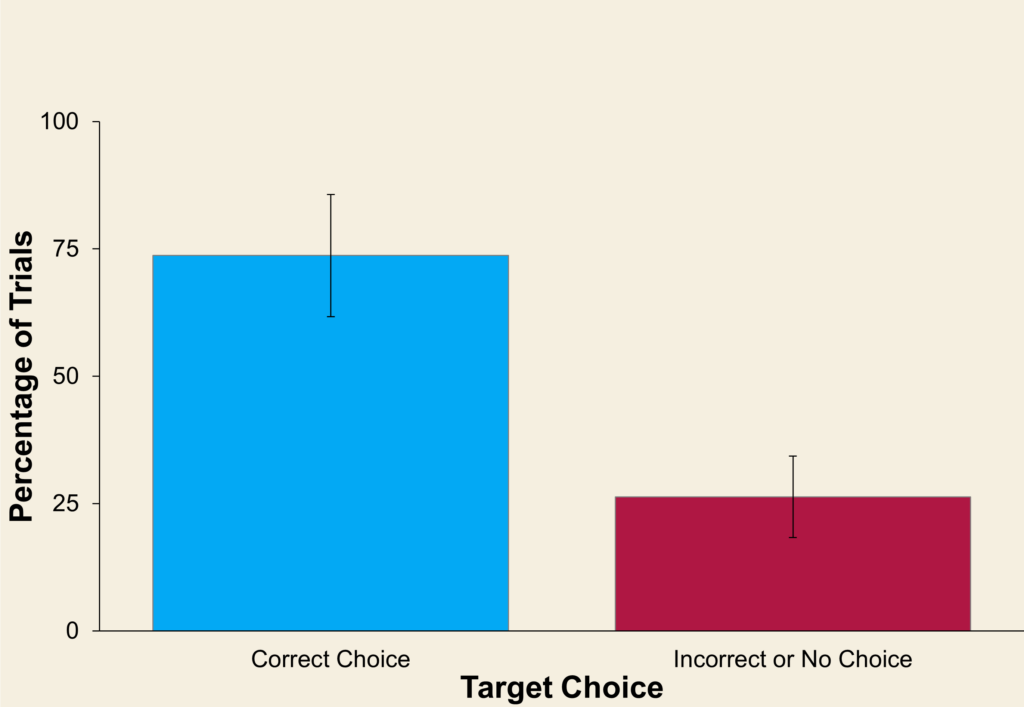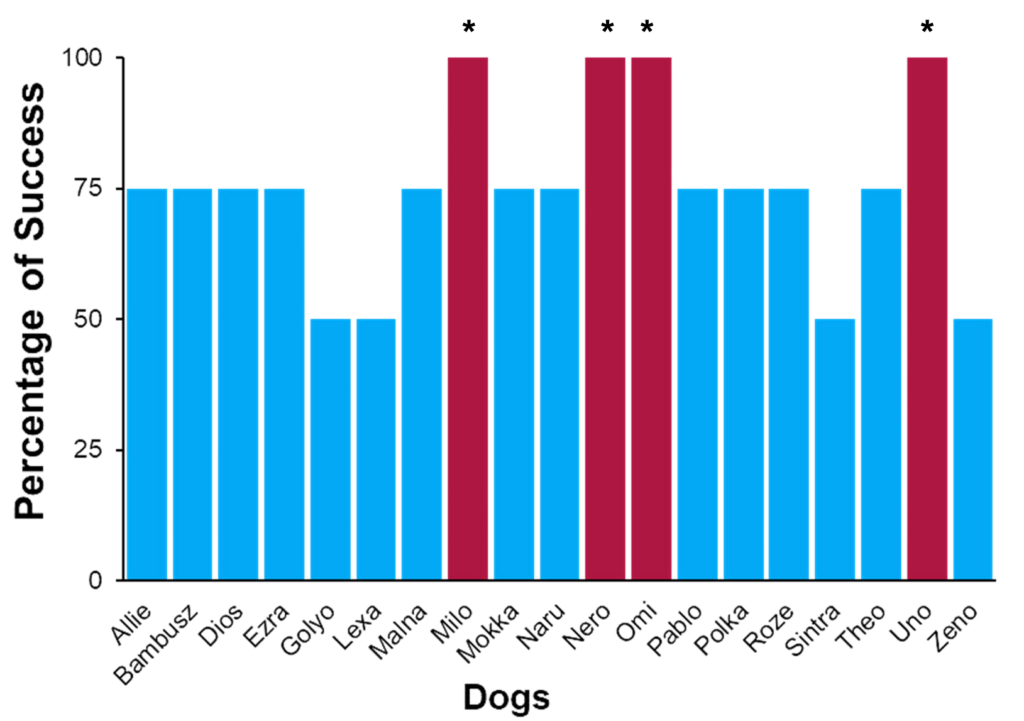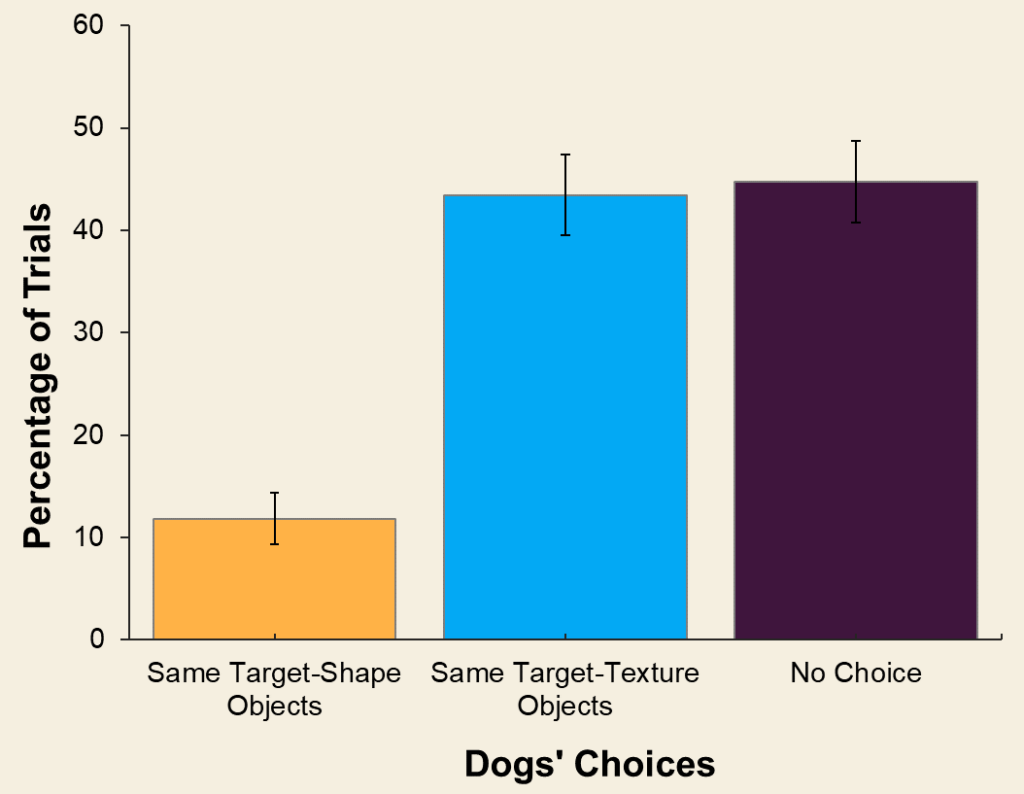Target trials
The dogs’ performance in choosing the target object correctly was statistically significant (binomial test, p (Y ≥ 56 | n = 76, p = .5) < .001), with a group mean success rate of 73.7% (SD ±0.18) in 56 out of 76 trials. The remaining 26.3% of trials resulted in incorrect or no choices (Figure 4).
The maximum success rate was 100% and the minimum success rate was 50% (Table 4). Milo, Nero, Omi, and Uno performed significantly better than chance (binomial test, p (Y ≥ 4 | n = 4, p = .5) < .001; Figure 5). However, individual statistical significance was not observed in the remaining dogs. To ensure the reliability of the results, only dogs that retrieved the target object in at least two out of four trials were included in the analysis. One dog did not meet this criterion, therefore was excluded from the analysis.


Object generalisation trials
Out of the total of 76 trials, dogs chose objects with the same texture as the target object significantly more frequently than objects with the same shape (binomial test, p (Y ≥ 33 | n = 76, p = .5) < .001). The dogs did not choose anything in 34 trials (Figure 6).
Further analysis using the chi-square test revealed a significant association between the choice of objects and their shape, texture, or no choice (Χ² (2, n = 19) = 15.82, p < .001). Pairwise comparisons with the Bonferroni correction showed that the frequency of texture-based choices (proportion = 0.45) was significantly higher than that of shape-based choices (proportion = 0.12) (X² (1, n= 19) = 13.73, p < .001). The frequency of texture-based choices did not differ significantly from that of no choice (proportion = 0.43) (Χ² (1, n = 19) = 0.015, p = 0.903).
